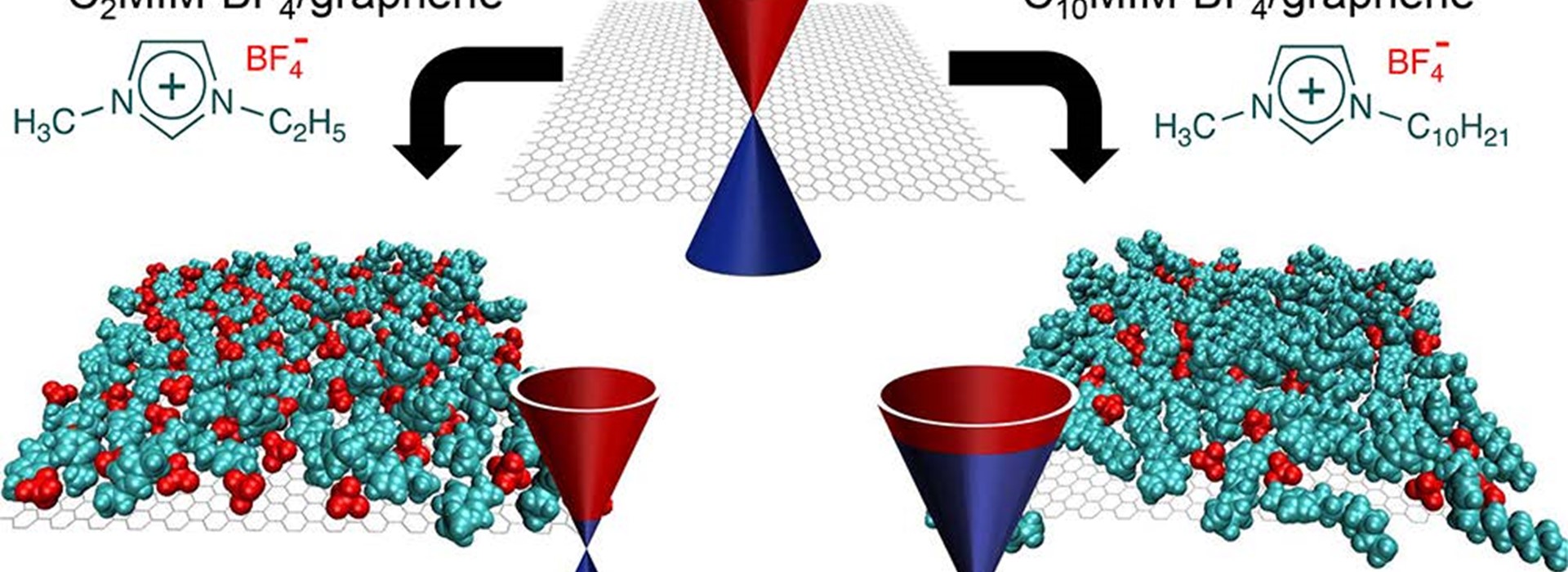Ionic liquids and doping of graphene: not really as expected

Graphene-based two-dimensional (2D) materials are promising candidates for a number of different energy applications. A particularly interesting one is in next generation supercapacitors, where graphene is being explored as an electrode material in combination with room temperature ionic liquids (ILs) as electrolytes. Because the amount of energy that can be stored in such supercapacitors critically depends on the electrode−electrolyte interface, there is considerable interest in understanding the structure and properties of the graphene/IL interface. Here, we report the changes in the properties of graphene upon adsorption of a homologous series of alkyl imidazolium tetrafluoroborate ILs using a combination of experimental and theoretical tools. Raman spectroscopy reveals that these ILs cause n-type doping of graphene, and the magnitude of doping increases with increasing cation chain length despite the expected decrease in the density of surface-adsorbed ions. Molecular modeling simulations show that doping originates from the changes in the electrostatic potential at the graphene/IL interface. The findings described here represent an important step in developing a comprehensive understanding of the graphene/IL interface.
Read about it here.
To enable comments sign up for a Disqus account and enter your Disqus shortname in the Articulate node settings.


